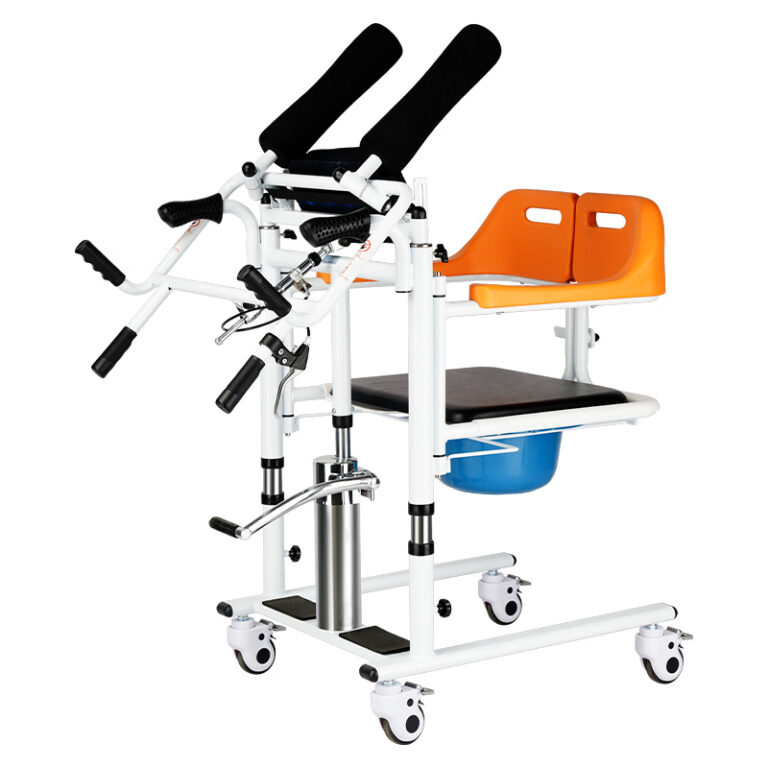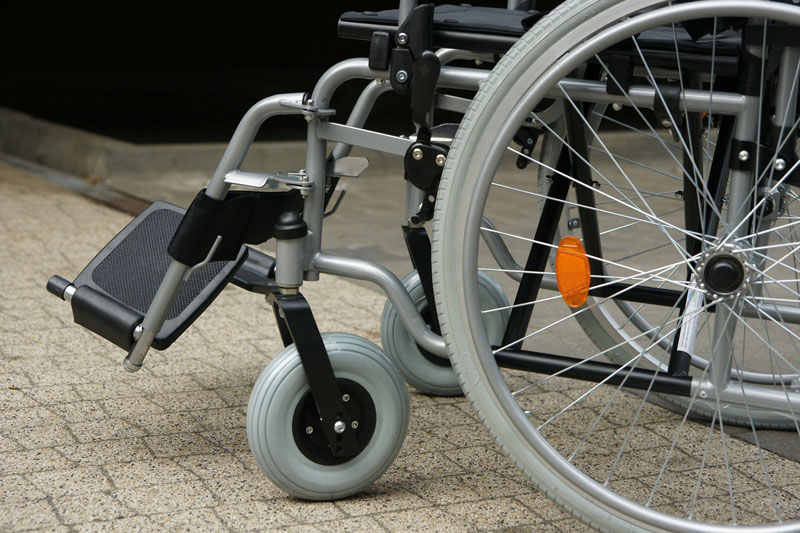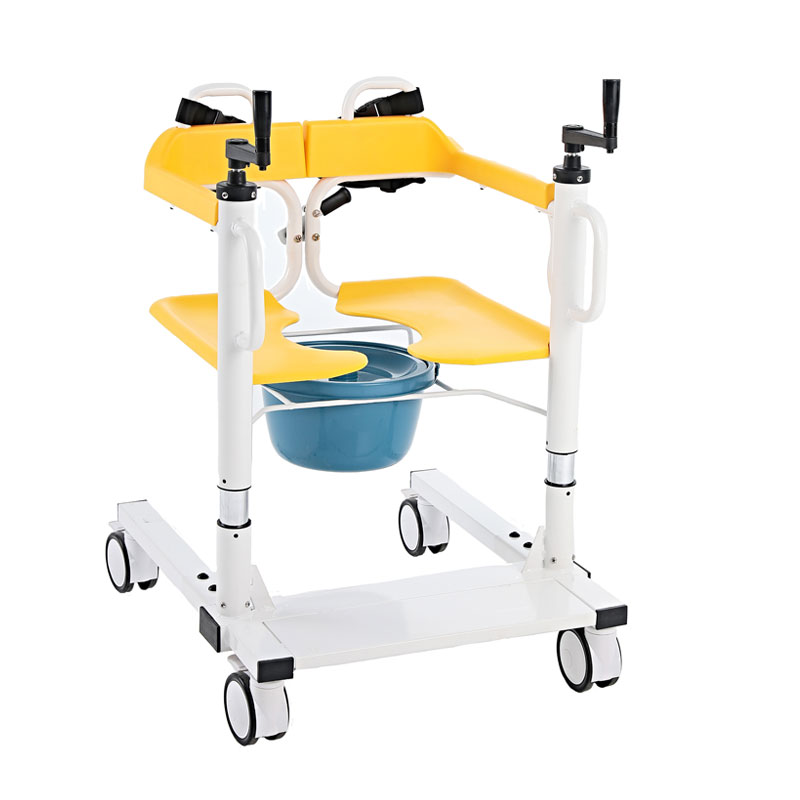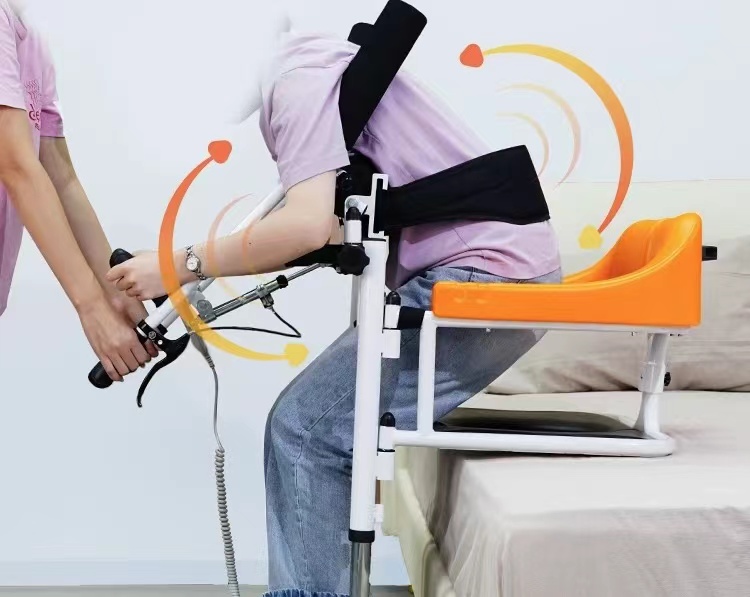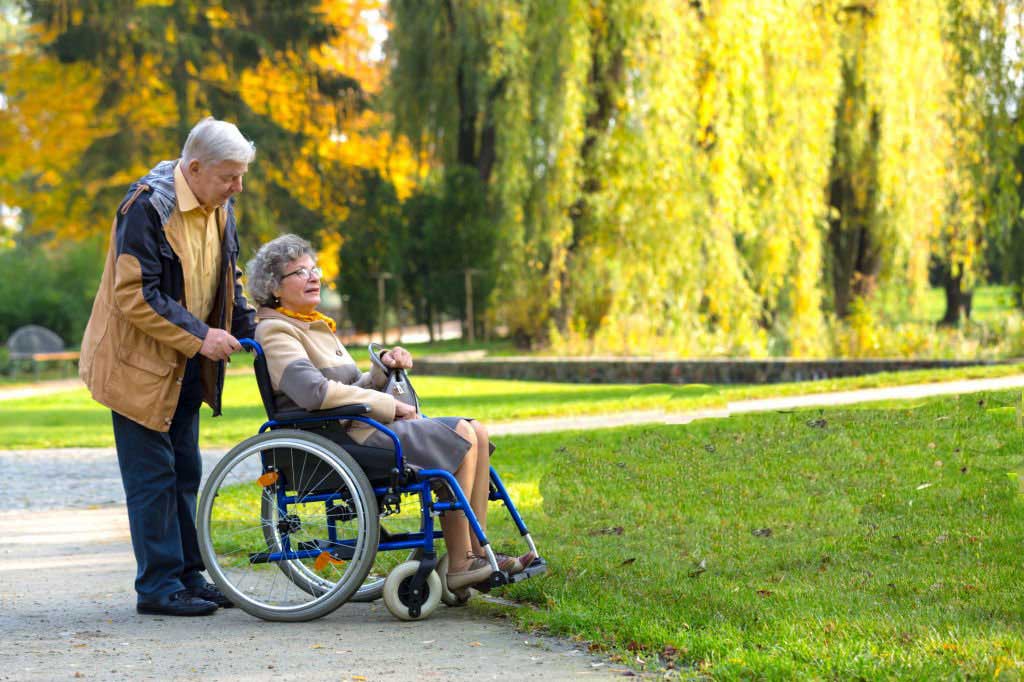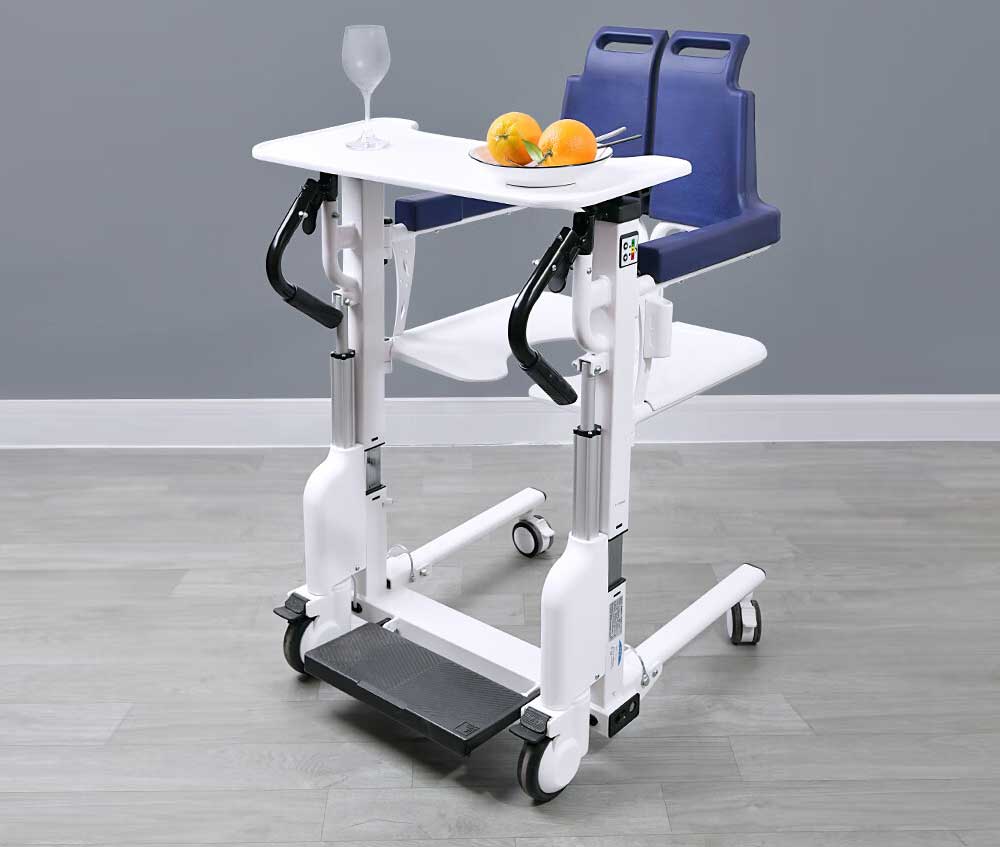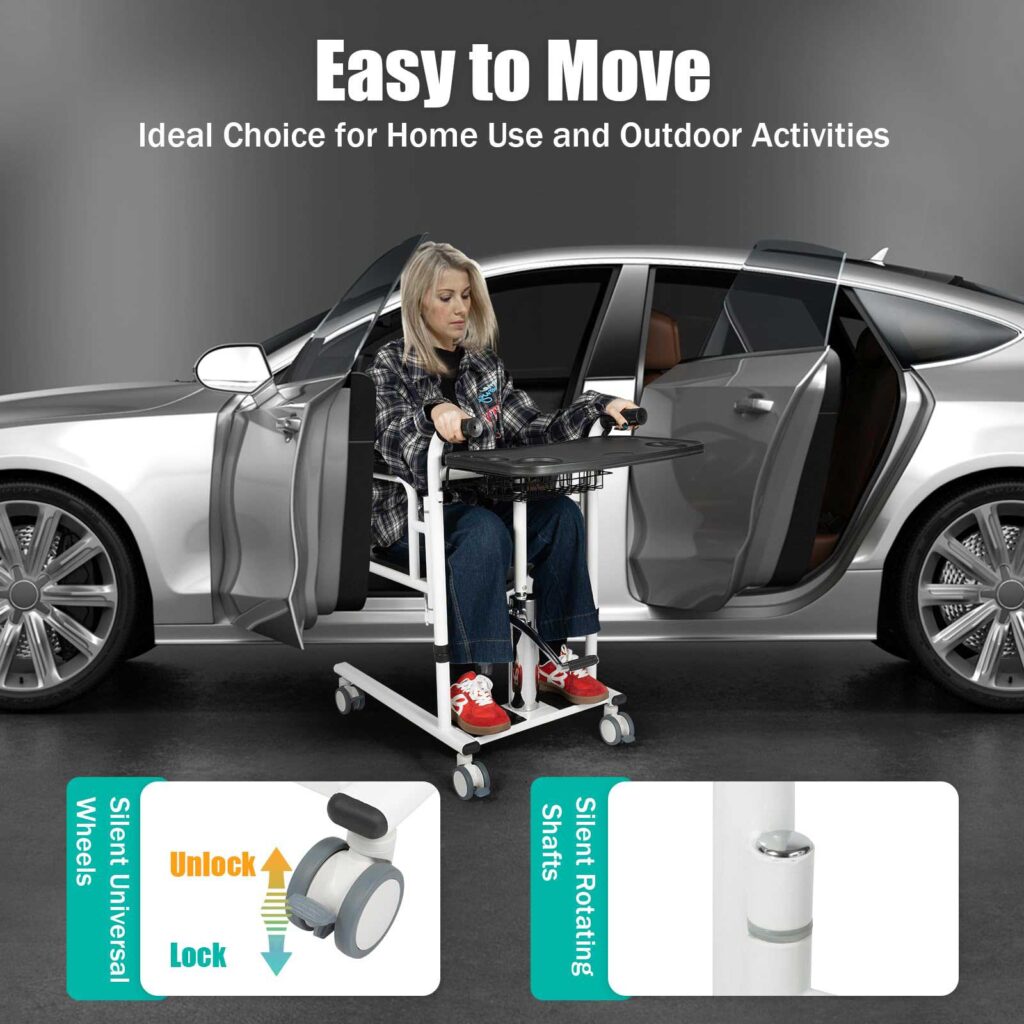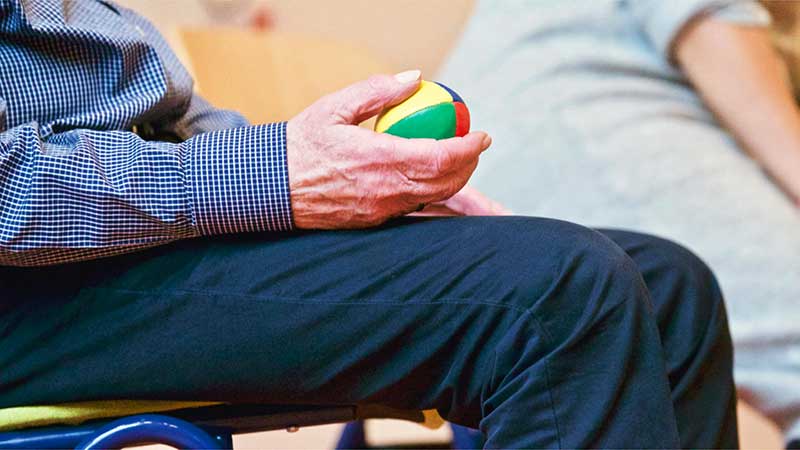Transfer chairs are mobility aids for people with limited mobility. Whether at a healthcare facility or home, transfer chairs have been the biggest step forward in how caregivers and healthcare professionals can assist individuals with movement.
Professionals at AGEALLY LIVING have prepared this guide by utilizing our vast experience of over 13 years in the field. It will help you understand about how a transfer chair is useful for improving the mobility and comfort of elderly or people with limited mobility.
Phil Sun
So, let’s take a deep dive into the wide range of transfer chairs, their purposes, and what makes them different while examining how they help within medical setups and in our homes.
What is a Transfer Chair with Wheels?
A lightweight and transportable device, a transfer chair with wheels is exclusively intended for people who require aid while transferring.
It includes chairs designed to help caregivers move easily and transport patients from one point of care to the next, while minimizing strain on their mobility.
Fitted with strong wheels, they are capable of sliding comfortably over any kind of surfaces so they are excellent for moving short distances.
Key Features of Transfer Chairs with Wheels:
- Lightweight Design: transfer chairs are designed to be lightweight enough for easy maneuverability and yet still robust for everyday use.
- Brake and Safety Features: transfer chairs are equipped with locking wheels and brakes to secure during transitions.
- Durable Materials: These are made of waterproof and rustproof material, which allows them to withstand harsh conditions.
Types of Transfer Chairs with Wheels

1. Manual Transfer Chairs: Typically set up for a caregiver to push, these are best for short trips and relatively easy to use.
2. Electric Transfer Chairs: These chairs are fitted with an electric motor and offer the user more independence so that they can operate them without any aid.
3. Hydraulic Transfer Lift Chairs: These chairs provide additional help for lifting that uses hydraulic tech to aid in the transfer of a user.
Manual vs. Hydraulic Vs. Electric Transfe Lifting ChairWhich is better for you
| Aspect | Manual Transfer Chair | Hydraulic Transfer Chair | Electric Transfer Chair |
|---|---|---|---|
| Operation | Operated manually by adjusting handles, relies on the caregiver's physical effort for movement. | Uses a hydraulic mechanism for easier lifting and transferring, reducing caregiver strain. | Equipped with a motor for automated lifting, minimizing physical effort from caregivers. |
| Ease of Use | Requires more physical effort, especially when handling heavier users. | Hydraulic system eases transfers, making it more manageable for caregivers. | Simplifies transfers with motorized lifting, making it the easiest option for caregivers. |
| Caregiver Assistance | Always requires caregiver involvement, relying on their physical capability for safe operation. | Caregivers still play a role, but the hydraulic system reduces physical strain. | Minimal caregiver effort is needed due to the motorized system, improving ease and safety. |
| Customizable Options | Adjustable height, seat, and footrest; fixed seat belt for added security. | Height adjustable with advanced hydraulic controls; solid back lock for enhanced safety. | Height adjustable, with motorized control for smooth transitions; includes a 360° all-inclusive seat for extra comfort. |
| Cost | More affordable due to the simple design, ideal for basic mobility needs. | Typically more expensive than manual models due to advanced hydraulic features. | Highest cost due to the motorized system, offering greater value for frequent use and improved caregiver comfort. |
| Maintenance | Simple design requires fewer repairs but may need regular checks for wear due to manual operation. | Hydraulic systems need periodic checks to ensure fluid and parts are in good condition. | Requires maintenance for the motor and battery, but typically more durable for long-term use. |
| Aspect | Manual Transfer Chair | Hydraulic Transfer Chair | Electric Transfer Chair |
|---|---|---|---|
Aspect
Weight Capacity
|
Manual Transfer Chair
Supports up to 150 kg, suitable for lighter or average-weight users.
|
Hydraulic Transfer Chair
Handles up to 250 kg, providing support for a range of mobility challenges.
|
Electric Transfer Chair
Can lift users up to 135 kg (300 lbs), making it ideal for a broader range of users.
|
Aspect
Suitability
|
Manual Transfer Chair
Best for occasional transfers within homes or care facilities.
|
Hydraulic Transfer Chair
Suitable for both home and healthcare settings with frequent transfers.
|
Electric Transfer Chair
Ideal for long-term use in homes, hospitals, or nursing homes, focusing on minimizing caregiver strain.
|
Aspect
Portability
|
Manual Transfer Chair
Lighter and more compact, easier to transport between rooms.
|
Hydraulic Transfer Chair
Bulkier due to the hydraulic system, but still manageable within home settings.
|
Electric Transfer Chair
Bulky but offers stability, better suited for stationary use in homes or facilities.
|
Aspect
Energy Efficiency
|
Manual Transfer Chair
No external power required, making it energy-efficient but physically demanding.
|
Hydraulic Transfer Chair
Hydraulic mechanism doesn’t require electricity, balancing energy efficiency with ease of use.
|
Electric Transfer Chair
Requires a rechargeable battery for operation, offering ease at the cost of regular recharging.
|
Aspect
Mobility
|
Manual Transfer Chair
Equipped with four wheels and a brake system, allowing for easy indoor transfers.
|
Hydraulic Transfer Chair
Features four cardan wheels for smooth 360° movement with a brake system.
|
Electric Transfer Chair
Offers two front wheels with brakes and two back wheels for flexible mobility and secure transfers.
|
Wheelchair Transfer Chair: A Dual-Function Mobility Aid
A wheelchair transfer chair combines the features of traditional wheelchairs and some sort of transfer chair. This all-in-one design allows users to move from one place to other without the necessity of multiple devices.
A wheelchair transfer chair can provide unrivaled convenience for users and caregivers, whether moving from bed to a bathroom or from the dining room table to a vehicle.
Features of Wheelchair Transfer Chairs:
- Adjustable Seat Height: Enables the individual to adjust chair height for comfort and transfer requirements.
- Ergonomic Design: Ergonomic and adjustable features make transfers easy.
- Compact Size: The chairs are usually small and can be used in the home or any healthcare setting.
Benefits of Using a Wheelchair Transfer Chair:
- Enhanced Mobility and Independence: Users can move more easily (with or without assistance from a caretaker)
- Increased Comfort During Transfers: The chair’s ergonomic and adjustable features streamline the process, making it more comfortable for everyone involved.
- Improved Safety: There are various safety elements that come with wheelchair transfer chairs like brakes and anti-tip technology which help prevent falls as well as other injuries and accidents.
Understanding the Transfer Lift Chair: Making Transfers Effortless
Transfer lift chairs are specifically designed to help those who need help getting up from a seated or lying down position without manual lifting.
These chairs are manual or hydraulic and used in scenarios that require frequent transfers like hospitals and nursing homes.

Common Uses of Transfer Lift Chairs:
- Hospitals and Nursing Homes: These are often used in a variety of professional healthcare or medical settings): to reduce the risk associated with getting patients to (or from) different parts of the facility.
- Private Homes and Rehabilitation Centers: Preferred when caring at home, especially for those with mobility limitations who will need assistance several times daily.
Key Considerations When Choosing a Transfer Chair for Healthcare and Home Use
There are a handful of things to keep in mind when choosing the right transfer chair for healthcare or home use which allows safety and comfort for users.
| Aspect | Importance | Key Considerations | Impact on Usability |
|---|---|---|---|
Aspect
Weight Capacity
|
Importance
High: A crucial factor to ensure the chair can accommodate the user safely.
|
Key Considerations
Confirm the maximum weight the chair can hold.
Choose a chair with a higher capacity for heavier users.
|
Impact on Usability
Insufficient weight capacity may result in chair instability.
Adequate capacity ensures user comfort and safety.
|
Aspect
Maneuverability
|
Importance
Medium to High: Determines how easily the chair can be pushed or moved by caregivers or users.
|
Key Considerations
Wheel size and material (larger wheels may roll better on uneven surfaces).
Frame weight affects ease of movement.
|
Impact on Usability
Poor maneuverability can make it difficult to move the chair in tight spaces or over uneven terrain.
|
Aspect
Portability
|
Importance
High: Ensures the user remains secure during transfers and minimizes the risk of accidents.
|
Key Considerations
Look for locking brakes to stabilize the chair during transfers.
Anti-tip features prevent the chair from tipping over.
|
Impact on Usability
Chairs without proper safety features increase the risk of falls or injuries, compromising user and caregiver safety.
|
Safety Standards and Certifications:
- WC19 Certification: This certification guarantees that the chair is safe to use in a vehicle, especially for wheelchair transfer chairs.
- Safety Features: Anti-tip alarmed chairs, locking brakes, and harnesses keep chairs secure.
Durability and Maintenance:
- How to Care for Your Transfer Chair: Regularly cleaning and checking the mechanical portions of your chair will prolong its life.
- Maintenance Schedules: Routinely conduct maintenance checks, especially for hydraulic and electric models, to avoid breakdowns.
Improving Efficiency in Healthcare Facilities with Transfer Chairs
In healthcare settings, transfer chairs are an indispensable part of the patient transfer process where they also speed up this totally manual operation and ensure that individuals can be moved from one point to another safely with minimal effort.
These chairs significantly help to reduce caretaker injuries by reducing the physical efforts associated with transferring.
Why Healthcare Facilities Need Transfer Chairs:
- Time-Saving Benefits: Transfer chairs make it easier and faster to move patients.
- Reducing Risk of Injuries: Lowering manual lifts makes patients and caregivers less likely to be injured.
- Enhancing Patient Comfort: Soft padding and ergonomic layouts allow the individual to remain comfortable during transport.
The Benefits of Transfer Chairs for Home Use
While transfer chairs are most commonly associated with medical settings, they can really help at home too. Those with any mobility issues will be able to get around the house safely and more efficiently, resulting in overall increased independence.
How Transfer Chairs Improve Daily Life at Home:
- Assisting with Bathroom Use: A water resistant transfer chair is ideal as it allows easy access to a toilet or shower.
- Facilitating Easy Movement in the House: Using transport wheel chairs will permit users access to all areas of their home without solely depending upon caregivers.
- Providing independence for the Elderly: Transfer chairs assist the elderly in living more independent without an unnecessary risk of falling or injury.
Partner with Ageally LIVING for Premium Transfer Chairs
AGEALLY LIVING is dedicated to bringing you top-quality transfer chairs made to meet the revolutionary standards of healthcare and other home uses with over 13 years of experience.
To deliver the best results, we have designed durable products with safety features, such as transfer chairs with wheels, wheelchair transfer chairs, and transfer lift chairs. Our focus is on providing creative and accessible mobility solutions that improve user quality of life and reduce caregivers’ workload.
Our transfer chair units are tested before delivery to meet international safety standards, ensuring peace of mind.
Contact us for more details about how we can help you meet your mobility requirements with products that are durable, comfortable, convenient to use, and safe.
FAQs
A transfer chair with wheels is mainly designed to help during short-distance transfers. On the other hand, a wheelchair transfer chair combines the functions of aiding in mobility and acting as both a wheelchair and a transfer aid, thus providing greater versatility.
The locking brakes, anti-tip mechanism and strong and sturdy frame together ensure that the user as well as caregiver are safe while using transfer chairs.
Definitely not, some transfer chairs are so called waterproof and can not be utilized in environments for long time with moisture, such as bathrooms. If you want to use it in the bathrooms, you can consider about the shawer chair.
Transfer chairs are very easy to maintain. Keeping the chair clean and checking once in a while for wear on wheels or hydraulic components will keep it up to par. And for the electric transfer chair, you need to recharge the battery and keep motor runs well.
Transfer chairs come with differing weight capacity, but it mainly falls within the range of 250 to 500 lbs. depending on the type and model you choose.
Transfer chairs are durable medical equipment and can be covered by insurance or Medicare; however, it is important to check with the doctor and dealer.

